 There are so many articles and videos about the aristocratic outfits from the 16th century in England, France, Italy, etc. But what about Germany? What clothing did German men wear in the 1500s? And did it differ much from English high-class costumes? Let’s find out. In this material, we’ll unveil some curious facts about European 16th-century male clothes, show you a nice modern reproduction of that period’s attire, and introduce you to the secrets of German Renaissance men’s clothing, with all its peculiarities.
There are so many articles and videos about the aristocratic outfits from the 16th century in England, France, Italy, etc. But what about Germany? What clothing did German men wear in the 1500s? And did it differ much from English high-class costumes? Let’s find out. In this material, we’ll unveil some curious facts about European 16th-century male clothes, show you a nice modern reproduction of that period’s attire, and introduce you to the secrets of German Renaissance men’s clothing, with all its peculiarities.
Read also: Aristocratic menswear in the 16th century. How did noblemen dress in the first half of the 1500s?
The article is based on the video by Natalya Skornyakova: https://www.youtube.com/watch?v=BqL-28z2Mo8
The male silhouette typical for the mid-1500s in Europe was cubical – wide shoulders, short breeches, thin legs, etc. This was the fashion of the 1520s-1550s in England, France, Germany, Italy, Czechia, and other European countries.
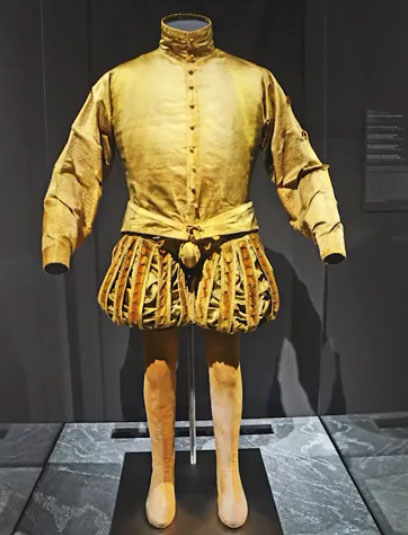
Attire of Maurice, Elector of Saxony. Exhibited in Residenzschloss Dresden, Germany
Schaube
The main garment, which creates the silhouette, was called a “gown” in England and “schaube” in Germany. This item was a status garment and it was even forbidden for ordinary craftsmen or villagers to use it. Only high-class men and royalty wore a schaube.
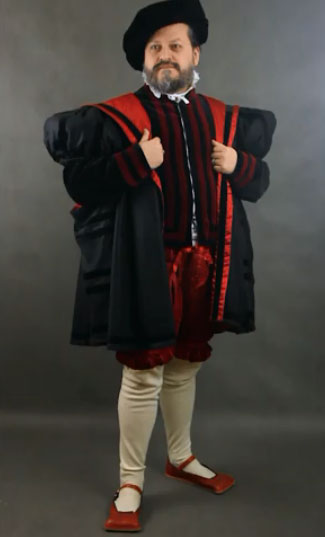
There were winter schaube or gowns – trimmed or even lined with fur.
But how did they achieve this cubical silhouette? How to make a man appear wider than taller? Actually, the technique is similar to that of a female Tudor-style petticoat. Tailors used whalebone, reed boning, and created special constructions to put them inside the buff sleeves.
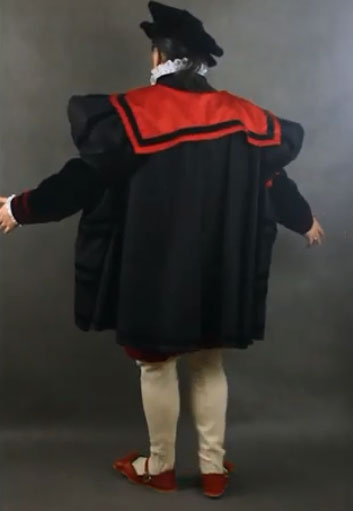
Obviously, these buff sleeves were decorative and actual openings for the arms were under the buffs. The rest of the sleeve is constructed as a hanging sleeve and it simply drapes down the schaube.
A typical feature in clothing of the time was the combination of fabrics of different textures but the same color. Like black velvet ribbon trim on black woolen schaube.
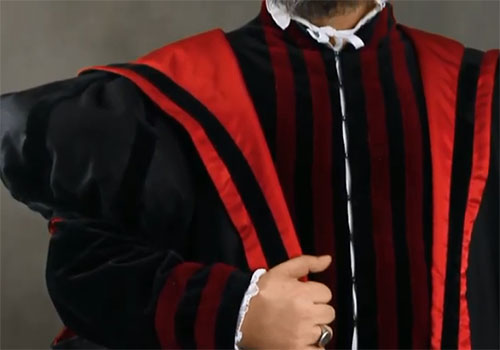
Wams jacket
Under the schaube, men wore a jacket called “wams” in Germany. This item had much more functional purpose than the pompous schaube. That’s why it was simpler and handier.
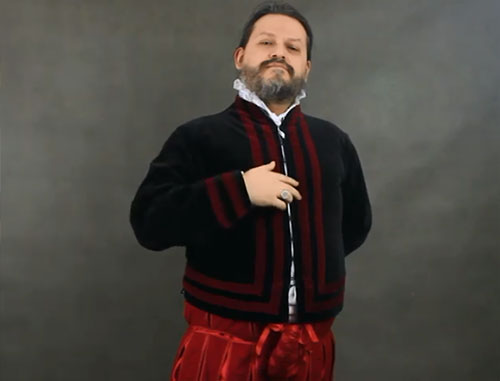
The wams was fastened at the front with a row of hooks and eyes.
Here’s an unexpected fact – the wams jacket was attached to the trousers by lacing. Just like the bodice and petticoat worn by women in the 16th century. So, if the man wanted to take his jacket off, he had to not only unhook it but also unlace the cords at the waist.
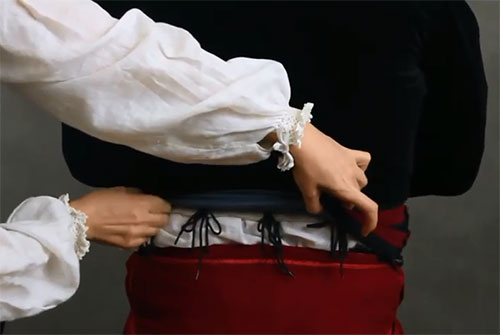
Interesting fact! If a man still needed to take off his clothes really fast, there was a little secret. He could unhook the wams, unlace the codpiece, and shake the outfit down like overalls, not bothering with all the lacing.
Trousers
The trousers used by high-class men in Germany in the 16th century were called “oberschenkelhose”. And the main and most curious detail of these pants was a codpiece. It was a typical detail that we can see in portraits from this period. When you see trousers with a highlighted codpiece, be sure that it’s the 1500s.

The most intriguing question is, what’s under the codpiece? Nothing improper actually. There were no male parts inside the codpiece itself. If to unlace it, we would see more lacing and a chemise. The codpiece was just a padded front of the trousers. Though, of course, this front flap could be unlaced so that the man could use a toilet, pretty much like the modern zipper.
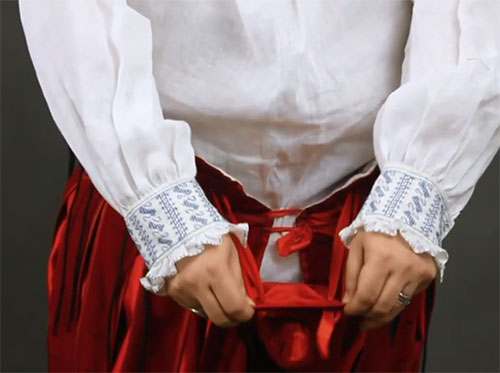
Let’s find out what details of the pants’ design were trendy in the 16th century. First of all, the upper layer of the oberschenkelhose consisted of narrow strips of fabric sewn to the body of the trousers in a certain way. When a man moved, the expensive lining (silk, for instance) peeked. At the same time, the fabric had little slits; the same we see on the upper garments, where a chemise peek through the slits as well.
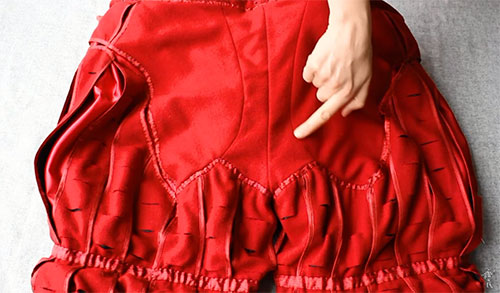
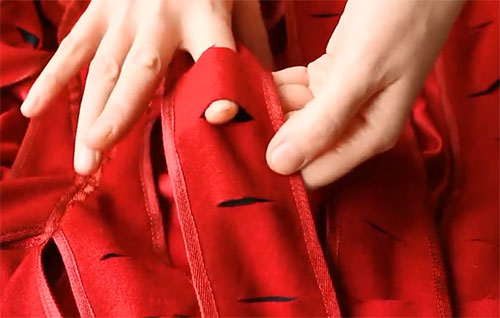
All in all, the construction of oberschenkelhose was rather complicated.
Stockings
The trousers were worn together with white stockings – separate pieces. They turned into separate stockings only approximately at the turn of the 16th century. These hosen or stockings could be sewn to the pants with temporary stitches or laced.

Garters were used as well. Both men and women wore garters with stockings. Men also attached them under the knee to keep stockings in place.
Chemise
And the very bottom part of male attire in the 16th century was a chemise. To read more about shifts or chemises of this period, visit this page: Underwear in Europe in the Early Modern period: chemise or shift.
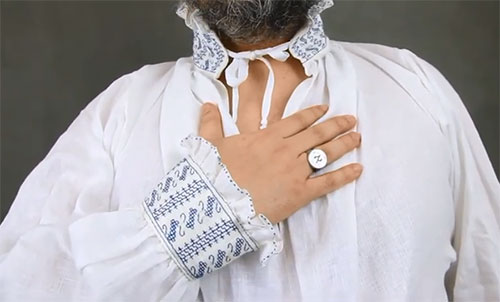
Chemises of the upper-class men usually had embroidered collar and cuffs at the time. The color and pattern of needlework depend on the particular decade.
Headgear
The headdress also was wide and eye-catching. For example, a large beret.


